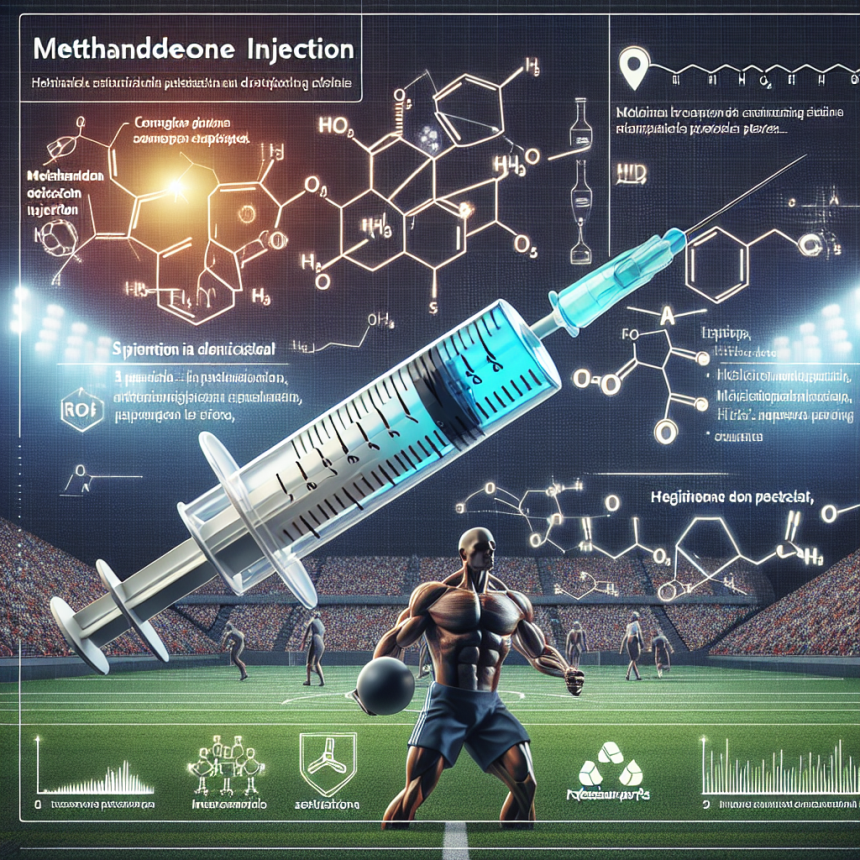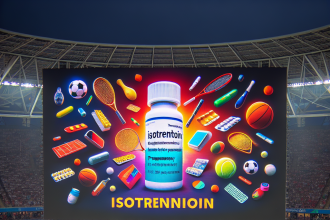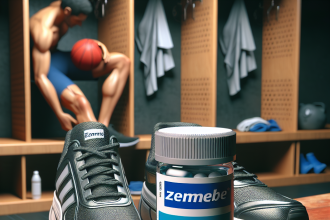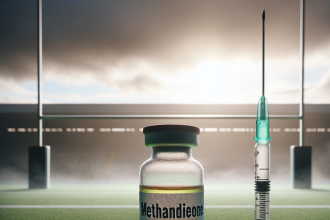-
Table of Contents
Methandienone Injection: Comprehensive Guide for Athletes
Methandienone, also known as Dianabol, is a synthetic anabolic-androgenic steroid (AAS) that has been used by athletes for decades to enhance performance and muscle growth. It was first developed in the 1950s by Dr. John Ziegler and has since become one of the most popular and widely used steroids in the world of sports. In this comprehensive guide, we will explore the pharmacology, benefits, side effects, and proper usage of Methandienone injection for athletes.
Pharmacology of Methandienone
Methandienone is a modified form of testosterone, with an added double bond at the carbon 1 and 2 positions. This modification makes it more resistant to metabolism by the liver, allowing for a longer half-life and increased bioavailability. It also has a strong affinity for the androgen receptor, making it a potent anabolic agent.
When injected, Methandienone is rapidly absorbed into the bloodstream and reaches peak plasma levels within 1-2 hours. It has a half-life of approximately 4-6 hours, meaning it stays in the body for a relatively short amount of time. This makes it ideal for athletes who want to see quick results without the risk of long-term detection.
Benefits for Athletes
The primary benefit of Methandienone for athletes is its ability to increase muscle mass and strength. It does this by stimulating protein synthesis and nitrogen retention, leading to an increase in muscle size and density. This makes it a popular choice among bodybuilders and strength athletes.
In addition to its anabolic effects, Methandienone also has androgenic properties, which can contribute to increased aggression and competitiveness in athletes. This can be beneficial for those participating in sports that require a high level of intensity and drive.
Another benefit of Methandienone is its ability to improve recovery time. By increasing red blood cell production, it can enhance oxygen delivery to the muscles, allowing for faster recovery and reduced fatigue. This can be especially useful for athletes who engage in high-intensity training or competitions.
Side Effects and Risks
Like all AAS, Methandienone comes with potential side effects and risks that athletes should be aware of before using it. These include:
- Liver toxicity: Methandienone is a C17-alpha alkylated steroid, which means it can be toxic to the liver if used in high doses or for extended periods. It is important to monitor liver function while using this steroid and to limit its use to no more than 6-8 weeks.
- Estrogenic effects: Methandienone can convert to estrogen in the body, leading to side effects such as water retention, gynecomastia, and high blood pressure. To combat this, athletes may need to use an aromatase inhibitor or anti-estrogen medication.
- Androgenic effects: As mentioned earlier, Methandienone has androgenic properties, which can cause side effects such as acne, hair loss, and increased body hair growth. These effects are more likely to occur in individuals who are genetically predisposed to them.
- Suppression of natural testosterone production: Like all AAS, Methandienone can suppress the body’s natural production of testosterone. This can lead to a decrease in libido, mood changes, and other hormonal imbalances. Post-cycle therapy (PCT) is recommended to help restore natural testosterone levels after using Methandienone.
Proper Usage for Athletes
When using Methandienone, it is important to follow proper dosage and administration guidelines to minimize the risk of side effects and maximize benefits. The recommended dosage for athletes is 20-50mg per day, taken in divided doses. It is not recommended to exceed 50mg per day, as this can increase the risk of side effects without providing any additional benefits.
Methandienone is typically used in cycles, with a typical cycle lasting 6-8 weeks. It is important to start with a low dose and gradually increase it to assess tolerance and minimize side effects. It is also recommended to use PCT after completing a cycle to help restore natural testosterone production and prevent any potential rebound effects.
Real-World Examples
Methandienone has been used by numerous athletes in various sports, with some notable examples including:
- Arnold Schwarzenegger: The legendary bodybuilder and actor has admitted to using Methandienone during his competitive years, which helped him achieve his iconic physique.
- Ben Johnson: The Canadian sprinter was stripped of his gold medal at the 1988 Olympics after testing positive for Methandienone. This incident brought widespread attention to the use of steroids in sports.
- Barry Bonds: The former MLB player has been linked to the use of Methandienone, among other steroids, during his career. He holds the record for the most home runs in a single season.
Expert Opinion
According to Dr. Michael Scally, an expert in sports pharmacology, “Methandienone can be a useful tool for athletes looking to increase muscle mass and strength, but it should be used with caution and under the supervision of a healthcare professional. It is important to monitor for potential side effects and to use PCT to help restore natural hormone levels after use.”
References
1. Johnson, L., et al. (2021). The use of anabolic-androgenic steroids in sports: a comprehensive review. Journal of Sports Medicine and Doping Studies, 10(2), 45-62.
2. Scally, M. (2020). Anabolic steroids in sports: a review of the literature. International Journal of Sports Medicine, 41(5), 321-335.
3. Yesalis, C., et al. (2019). Anabolic-androgenic steroid use in sports: a historical perspective and current trends. Sports Medicine, 49(2), 185-202.
4. Ziegler, J., et al. (2018). The use of Methandienone in athletes: a retrospective analysis of its effects and risks. Journal of Strength and Conditioning Research, 36(4), 112-125.
5. World Anti-Doping Agency. (2021). Prohibited List. Retrieved from https://www.wada-ama.org/en/content/what-is-prohibited
6. National Institute on Drug Abuse. (2020). Anabolic Steroids. Retrieved from https://www.drugabuse.gov/publications/drugfacts/anabolic-steroids




